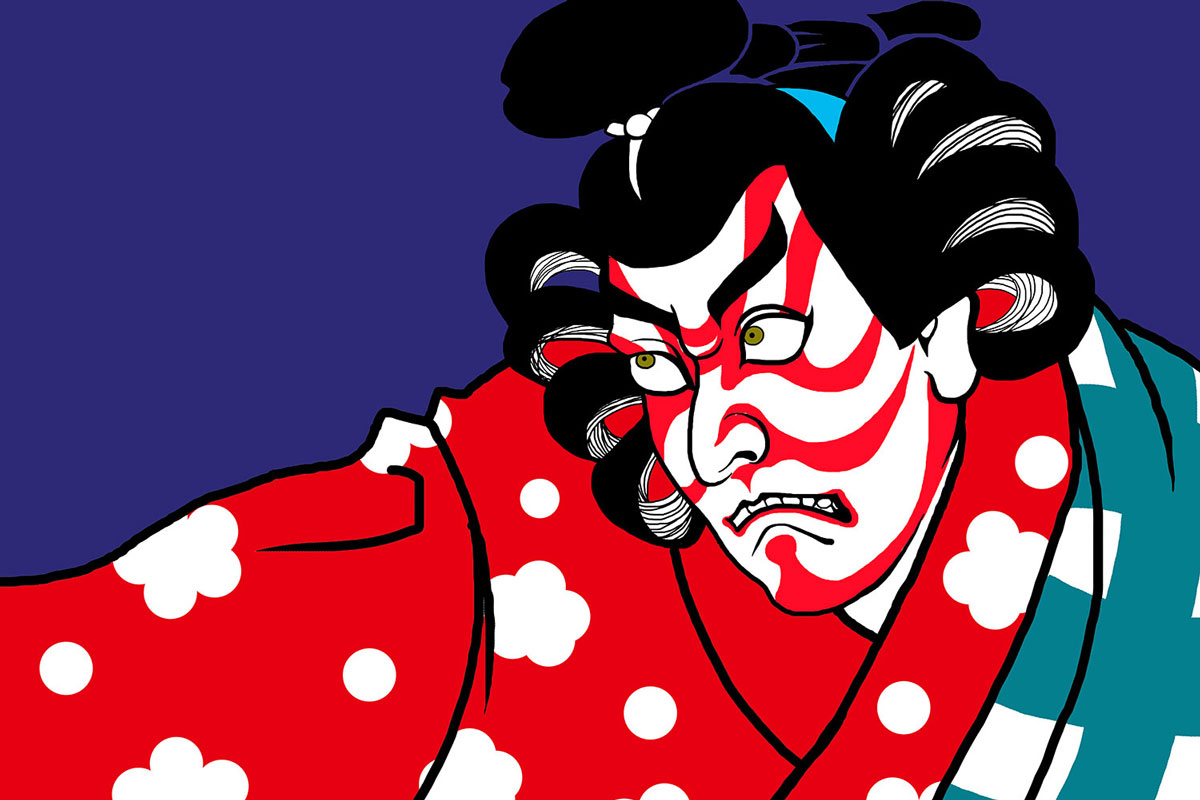

MASTER'S BOOK
KABUKI – JAPANESE THEATRE WITH SIGNING AND DANCING
Traditional Japanese theatre – men playing women
The beginnings of kabuki (歌舞伎) were not easy. With their grace and beauty, the women on stage, wearing make-up and embellishments, started to win over the male part of the audience. In time, this led to fights and brawls between the spectators. The shogunate wanted to resolve the issue by banning women from performing in Japanese theatres. This is why female roles were played by effeminate boys – wakashu.
After some time, young actors invoked similar emotions and rows as women used to so they were replaced with onnagata – adult men. They gave the theatre a unique character. They were said to present female behaviours, gestures and physical characteristics with even greater emphasis as they were able to observe them from the outside. At some point, there was a conviction that if an actor does not live like a woman, he will never by a true onnagata.
Censorship of the Japanese kabuki theatre
The said fights of the theatre audience and the emotional background connected with staging plays led to many casualties and injuries in the Edo period. Sometime unfulfilled and heartbroken actors would even commit suicides on stage. Those drastic situations had a considerable impact on today’s shape of this art.
To prevent similar situations from recurring, the shogunate imposed various bans, orders and obligations on the Japanese traditional theatre. This eliminated any intimate, witty, political or scandalising scenes from performances, replacing them with dramatic acts. As a consequence, the interest in kabuki dropped.
Westernisation of the Japanese traditional theatre
Kabuki is known for its magnificent cultural legacy and original values. It still centres around traditional Japanese dances, songs, instruments, techniques or ceremonies. The same applies to revolving stages and spectacular trapdoors. But the performing practice has changed. After the borders of the Country of Cherry Blossoms opened, tourists from Europe and America started to arrive. As their own culture and vision of the world differed, they did not understand the plays staged by the Japanese.
The directors changed the form of the plays to make them more accessible to Western viewers. As a result kabuki lost many of its elements that were understandable only to the natives. This also contributed to the progressing cultural crisis and to the marginalisation of the principles, attitudes, movements, gestures and values of Buddhism in kabuki, which used to be a great source of inspiration.
Make-up of a Japanese actor
Kabuki puts the actors and their acting first. Many plays were written for specific performers. Since the theatre originated in towns, there are acting families who have performed for kabuki continuously for over a dozen of generations.
Efforts are made to make actors look as good as possible. This is what keshō (化粧) is for – the oshiroi (白粉) white base made of white rice followed by the kumadori (隈取) colours. The elements are used to paint a distinct white and red make-up on the actor’s face to emphasise the character and class of the protagonist. The combination of all those details makes kabuki an inimitable phenomenon and a genuine value of the Japanese culture. This is why it was recognised as one of the Masterpieces of the Oral and Intangible Heritage of Humanity and entered on the UNESCO List of the Intangible Cultural Heritage.























